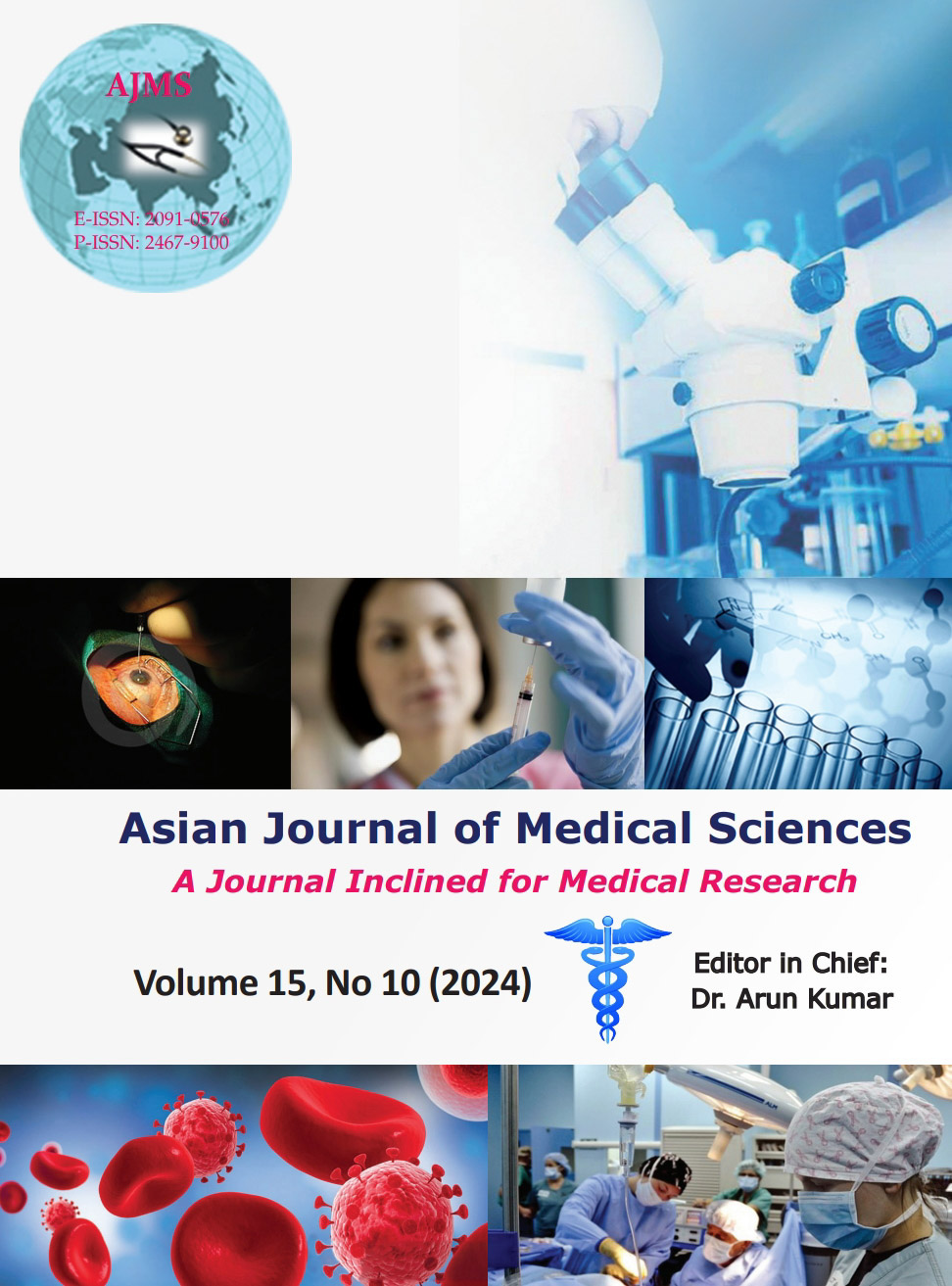A study of functional outcome in unstable intertrochanteric fractures treated by proximal femoral nailing in Bundelkhand region
Keywords:
Proximal femoral nail; Intertrochanteric fractures; Proximal femur fractureAbstract
Background: Intertrochanteric fractures are the most frequent fractures of the hip joint. This is attributed to the increase in the elderly population in our country, along with osteoporosis being prevalent in these populations.
Aims and Objectives: The aim of the study is to prospectively analyze the functional outcome of unstable intertrochanteric fractures managed with “proximal femoral nail” (PFN).
Materials and Methods: The prospective study was conducted on 48 cases of unstable intertrochanteric in Maharani Laxmi Bai Medical College, Jhansi, between June 2022 and December 2023.
Results: In our study, the mean age of the patient is 36.16 and the most common age group is 41–60 years, 33.33%, and >60 years, 41.67%. In forty-eight cases, 37 (77.08%) were male patients, and 11 (22.92%) were female patients. The Harris hip score patients follow-up after 3 months 8 (16.67%) patients of excellent outcomes, 18 (37.50%) patients of good outcomes, 12 (25.00%) of fair outcomes, and 10 (20.83%) patients of poor outcomes. The Harris hip score patients follow-up after 6 months 24 (50%) patients of excellent outcomes, 20 (41.67%) patients of good outcomes, 2 (4.17%) of fair outcomes, and 2 (4.17%) patients of poor outcomes.
Conclusion: In unstable proximal femur fractures, PFN is a significant advancement in the treatment of unstable trochanteric fractures which has the unique advantages of closed reduction, preservation of fracture hematoma, less tissue damage, early rehabilitation, and early return to work.
Downloads
Downloads
Published
How to Cite
Issue
Section
License
Copyright (c) 2024 Asian Journal of Medical Sciences

This work is licensed under a Creative Commons Attribution-NonCommercial 4.0 International License.
Authors who publish with this journal agree to the following terms:
- The journal holds copyright and publishes the work under a Creative Commons CC-BY-NC license that permits use, distribution and reprduction in any medium, provided the original work is properly cited and is not used for commercial purposes. The journal should be recognised as the original publisher of this work.
- Authors are able to enter into separate, additional contractual arrangements for the non-exclusive distribution of the journal's published version of the work (e.g., post it to an institutional repository or publish it in a book), with an acknowledgement of its initial publication in this journal.
- Authors are permitted and encouraged to post their work online (e.g., in institutional repositories or on their website) prior to and during the submission process, as it can lead to productive exchanges, as well as earlier and greater citation of published work (See The Effect of Open Access).




